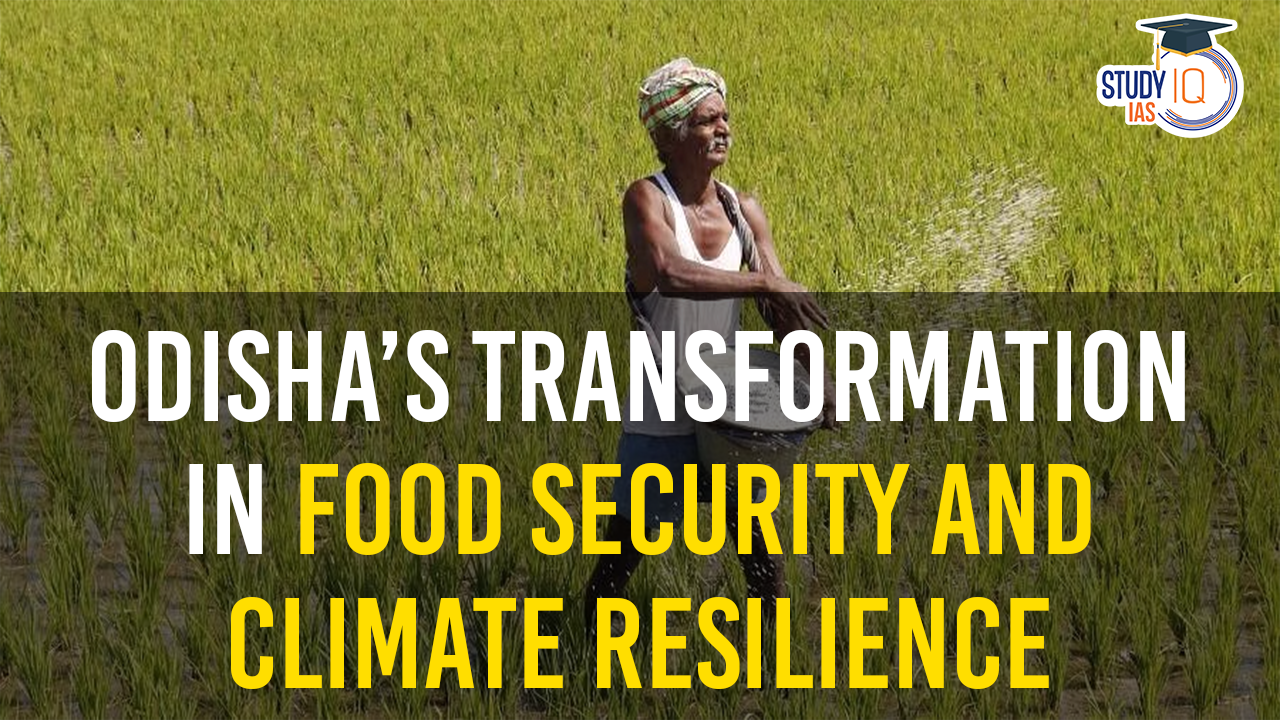Context: Faced with the escalating climate crisis and its dire impacts on food security, Odisha’s transformative journey offers a glimmer of hope and a model for others to emulate.
Case Study: Odisha’s Transformation in Food Security and Climate Resilience
Agricultural Transformation
- From Scarcity to Surplus: Odisha transitioned from rice importer to producer of a record 13.6 million tonnes in 2022.
- Empowering Small and Marginal Farmers: Focus on smallholder income and productivity led to a tripling of rice yield in two decades. Kalahandi, once known as the “land of hunger,” became the state’s rice bowl.
- Diversification and Sustainability: Schemes like KALIA and Odisha Millet Mission promoted climate-resilient crops like millet, reducing dependence on paddy.
We’re now on WhatsApp. Click to Join
Resilience and Sustainability
- Proactive Action: Odisha adopted a comprehensive Climate Change Action Plan, covering agriculture, coastal protection, energy, and more.
- Bottom-Up Approach: The Crop Weather Watch Group and field visits monitor crop health and enable timely interventions during natural disasters.
- Climate-Smart Practices: Farmers are adopting techniques like integrated farming, zero-input natural farming, and water-saving technologies.
Social Protection
- Food Security Champion: Odisha became the fourth largest contributor to India’s rice pool and topped the National Food Security Act ranking for effective implementation.
- Partnerships for Progress: The state collaborates with the UN World Food Programme on innovative pilots like biometric PDS and rice fortification.


 Indus Water Treaty 1960 Suspended by Ind...
Indus Water Treaty 1960 Suspended by Ind...
 5 Years of SVAMITVA Scheme and Its Benef...
5 Years of SVAMITVA Scheme and Its Benef...
 Places in News for UPSC 2025 for Prelims...
Places in News for UPSC 2025 for Prelims...





















